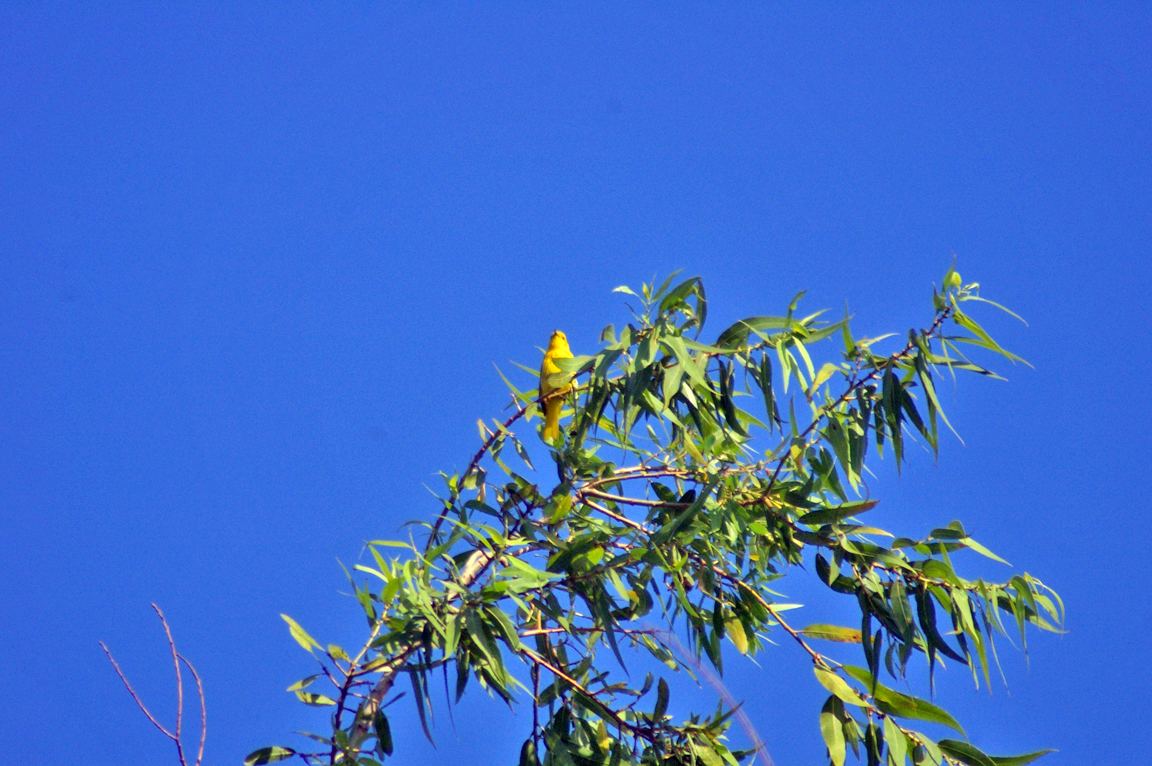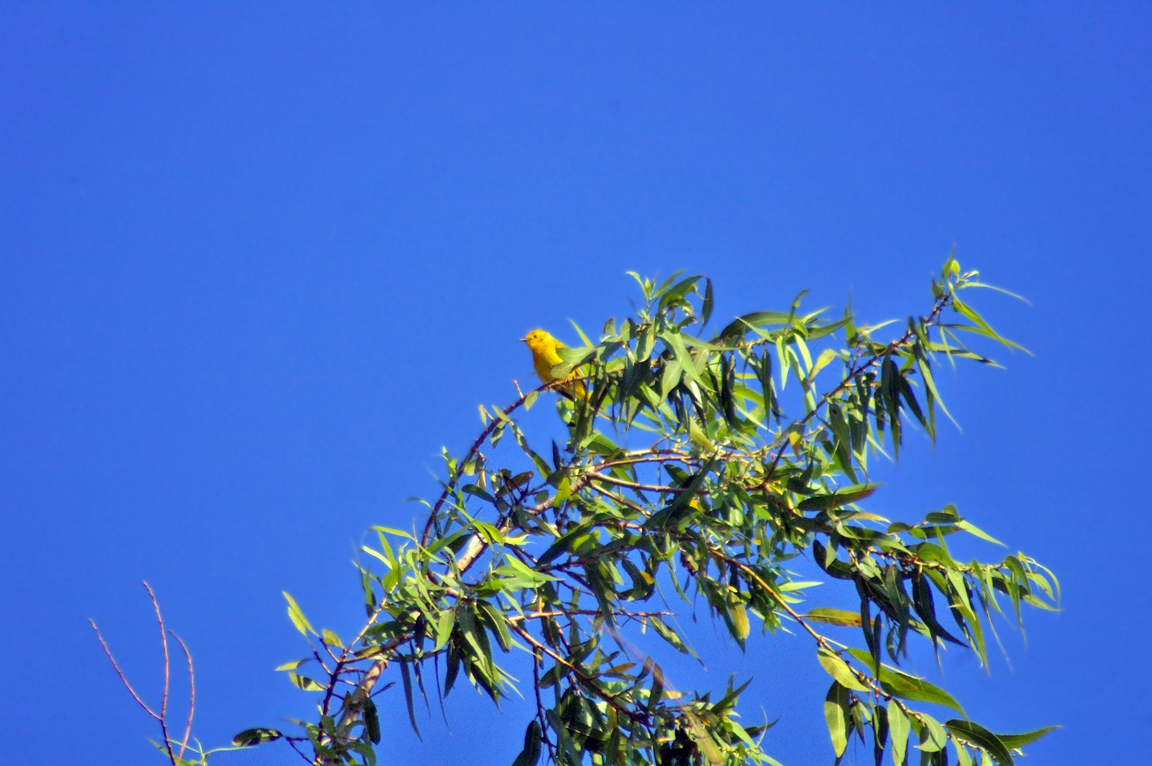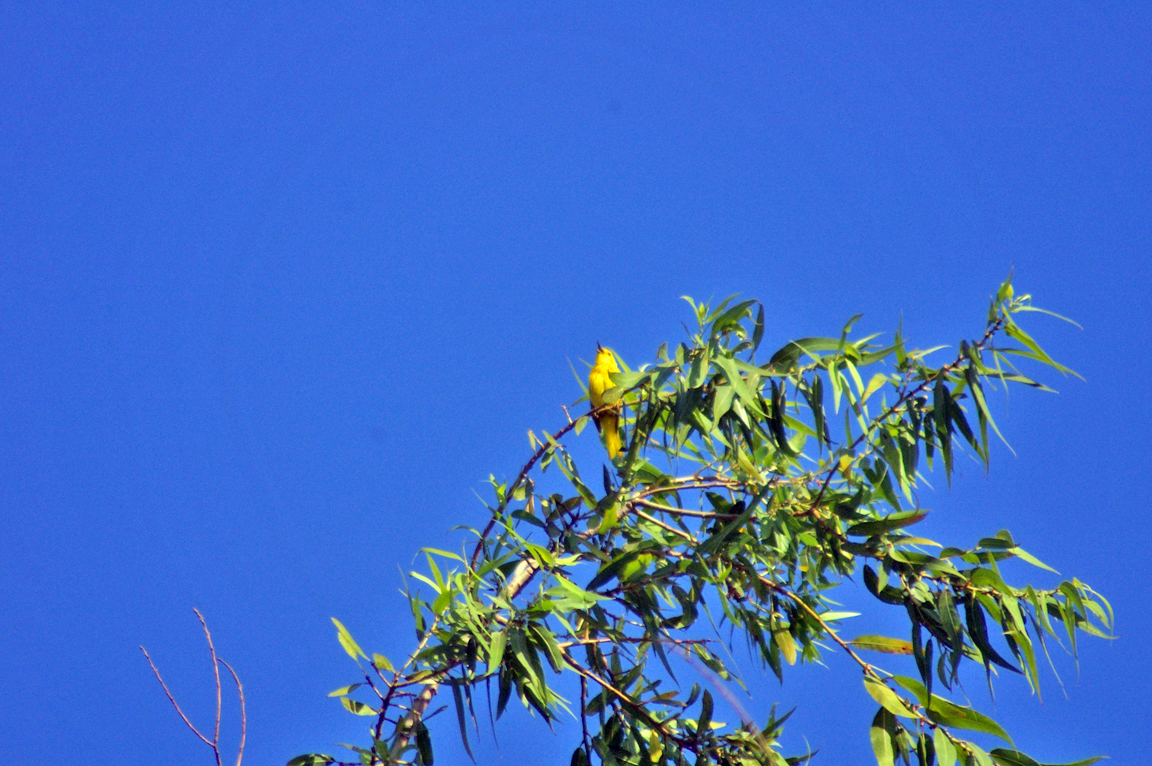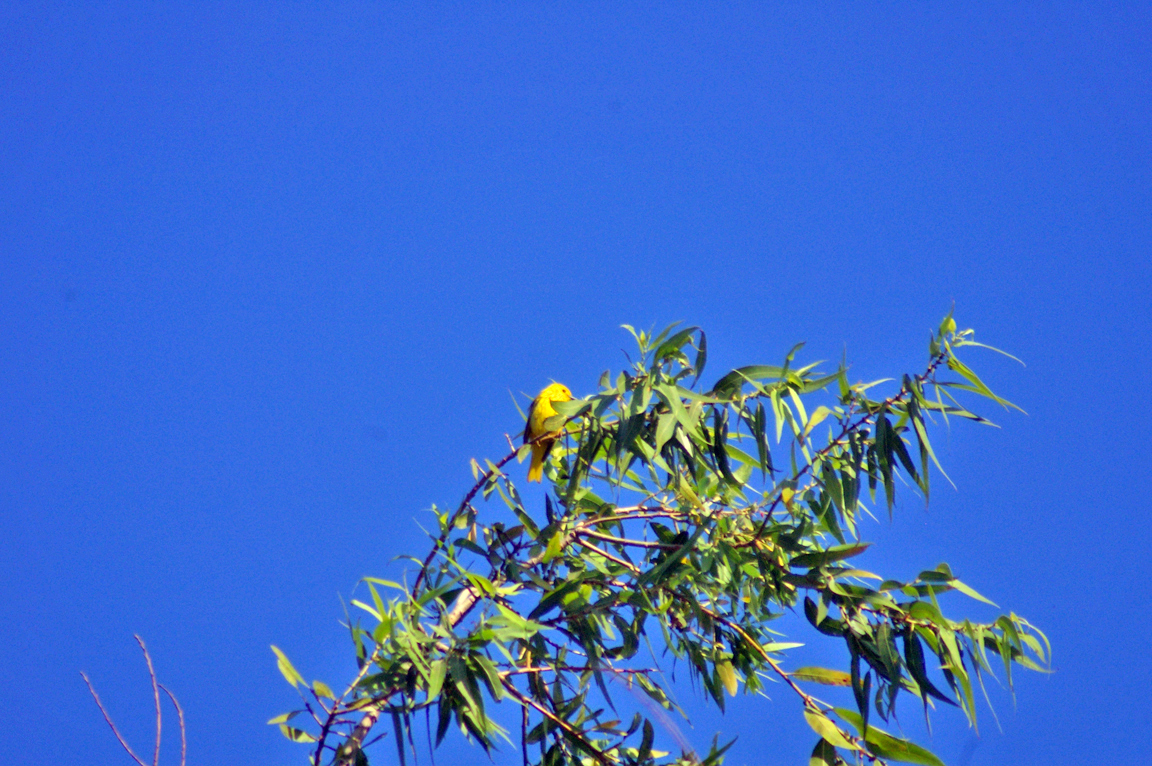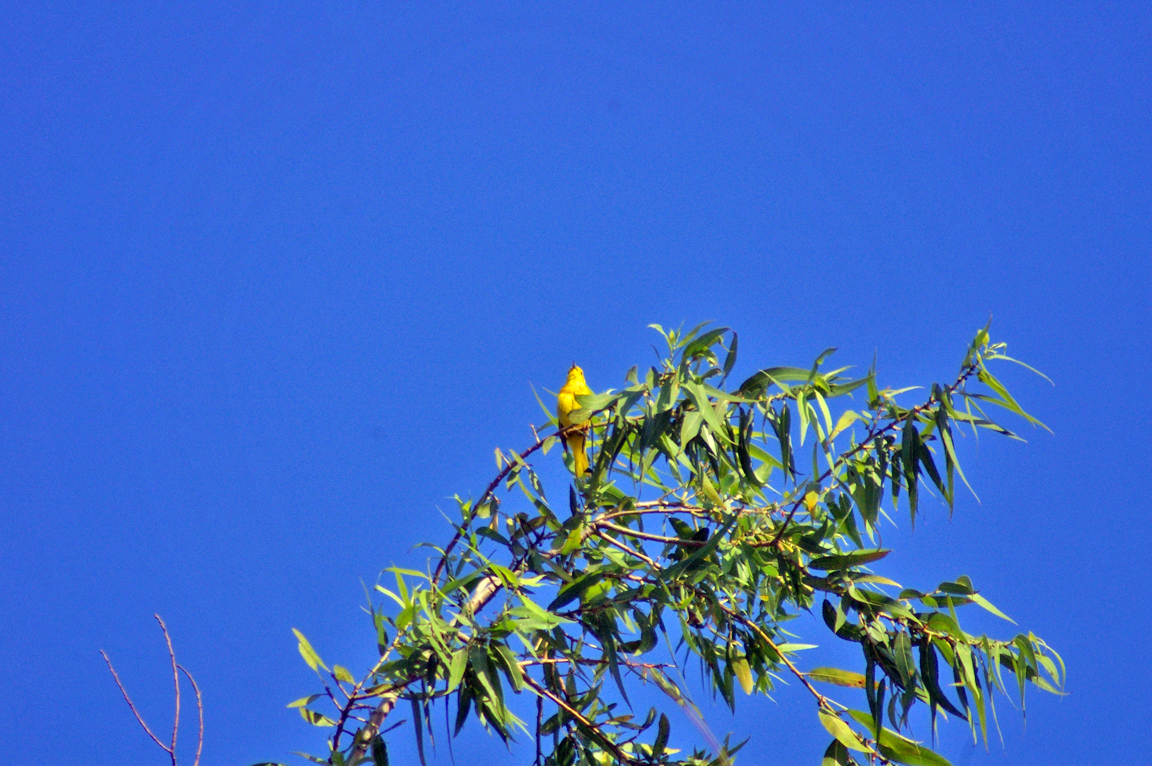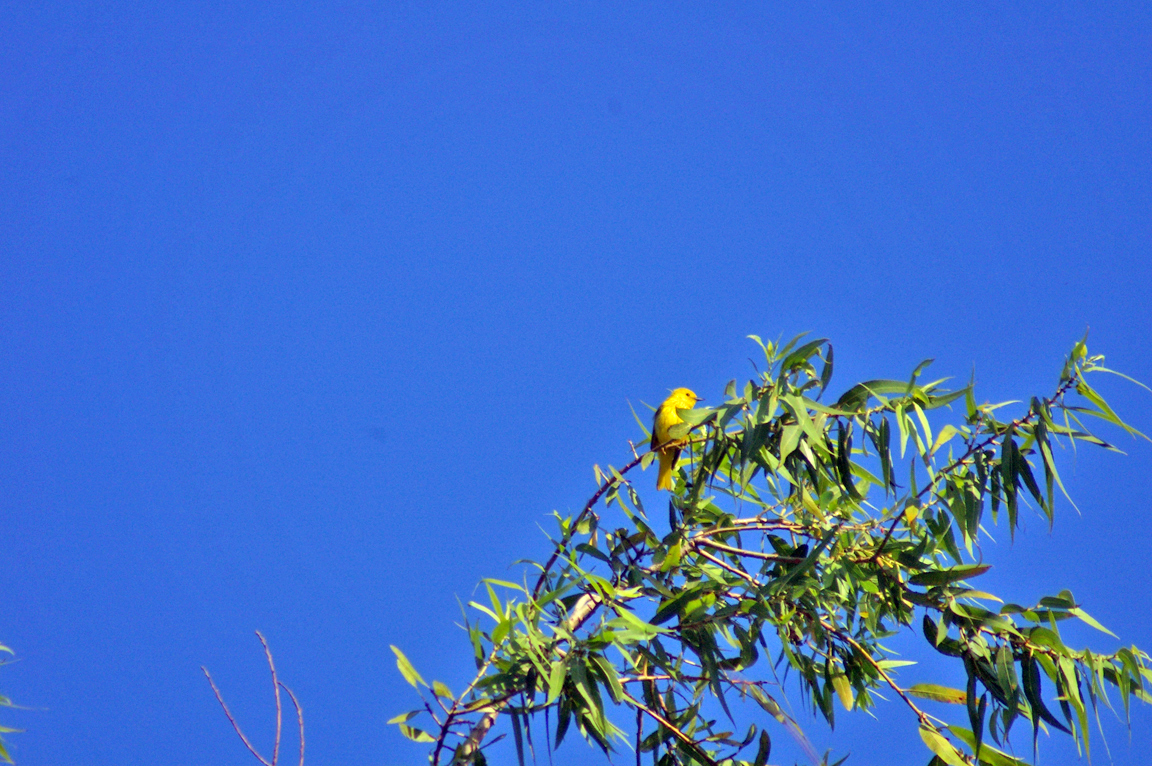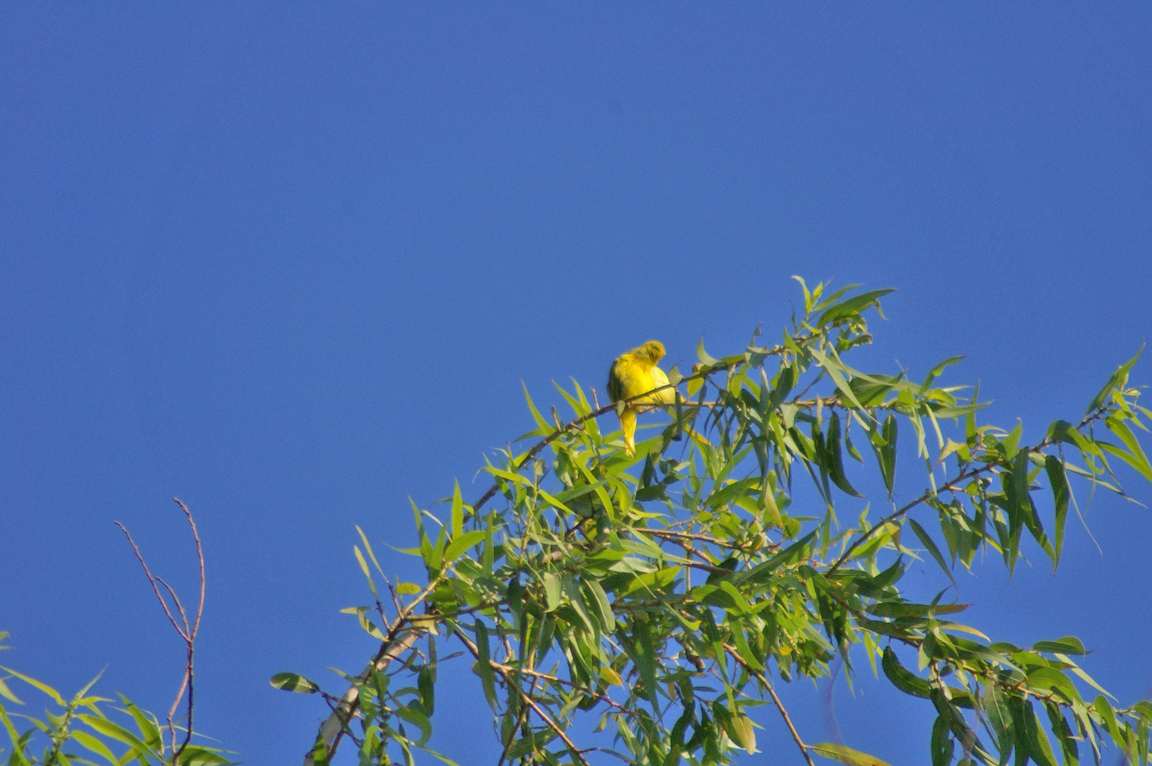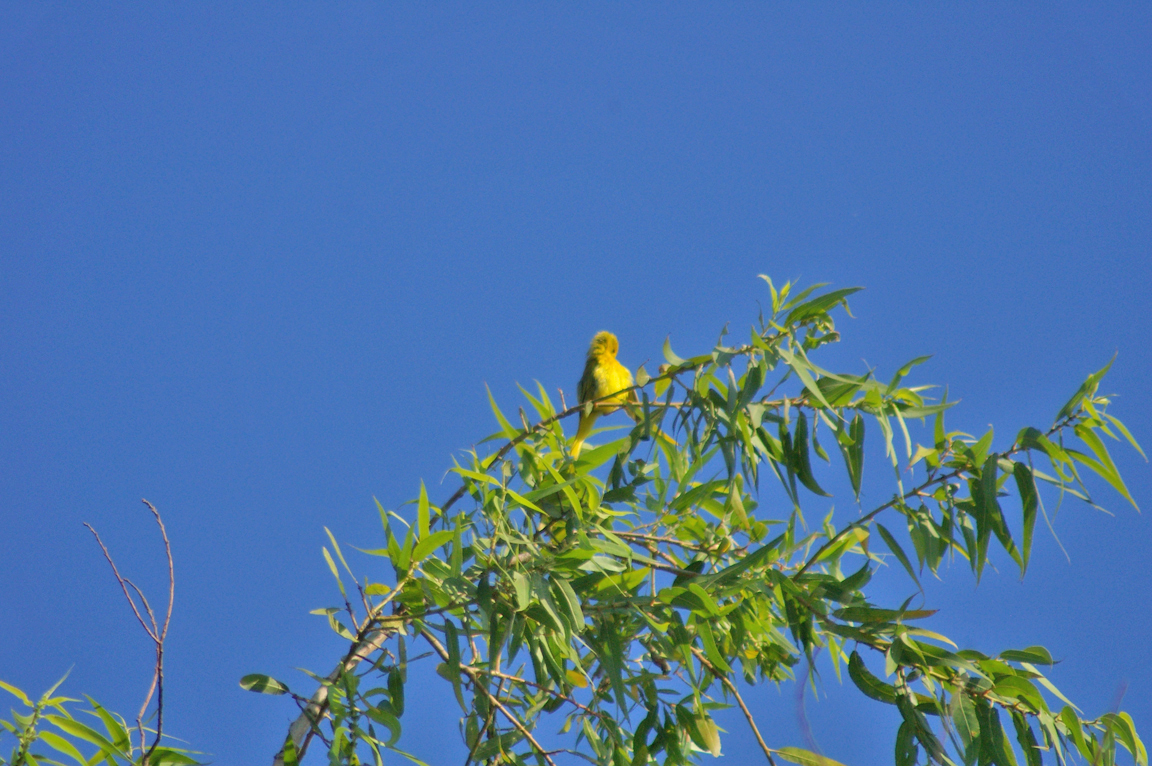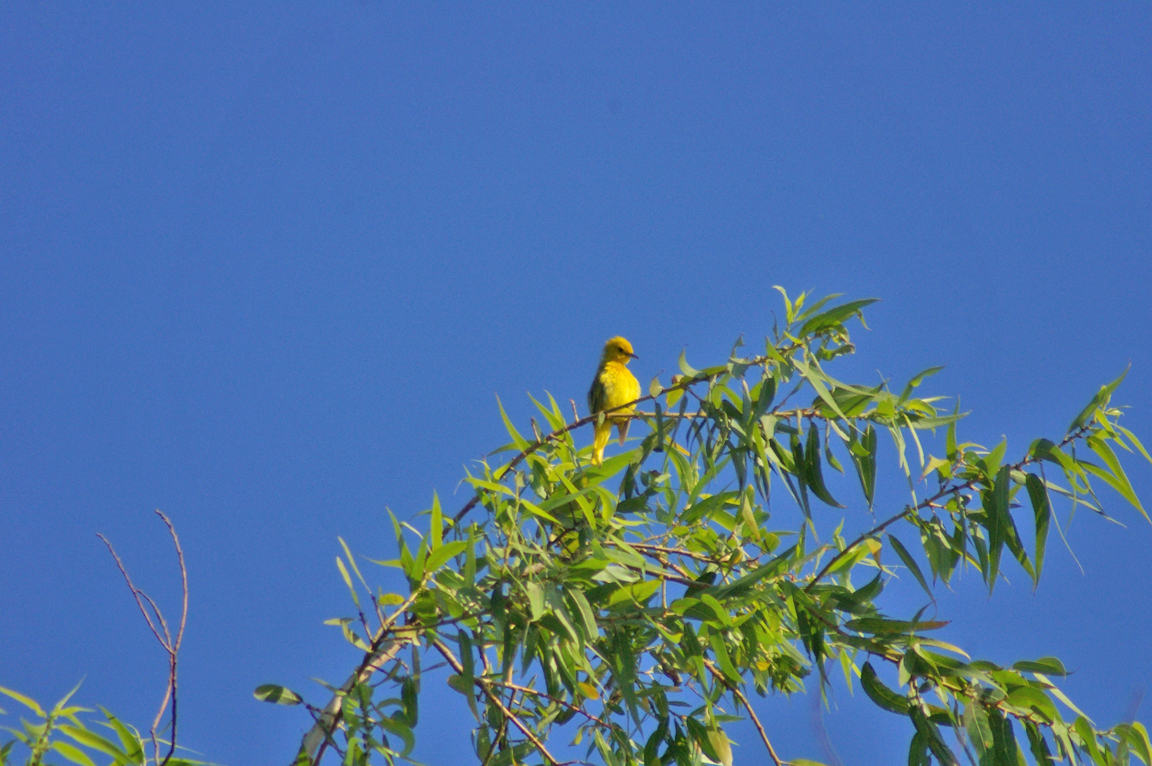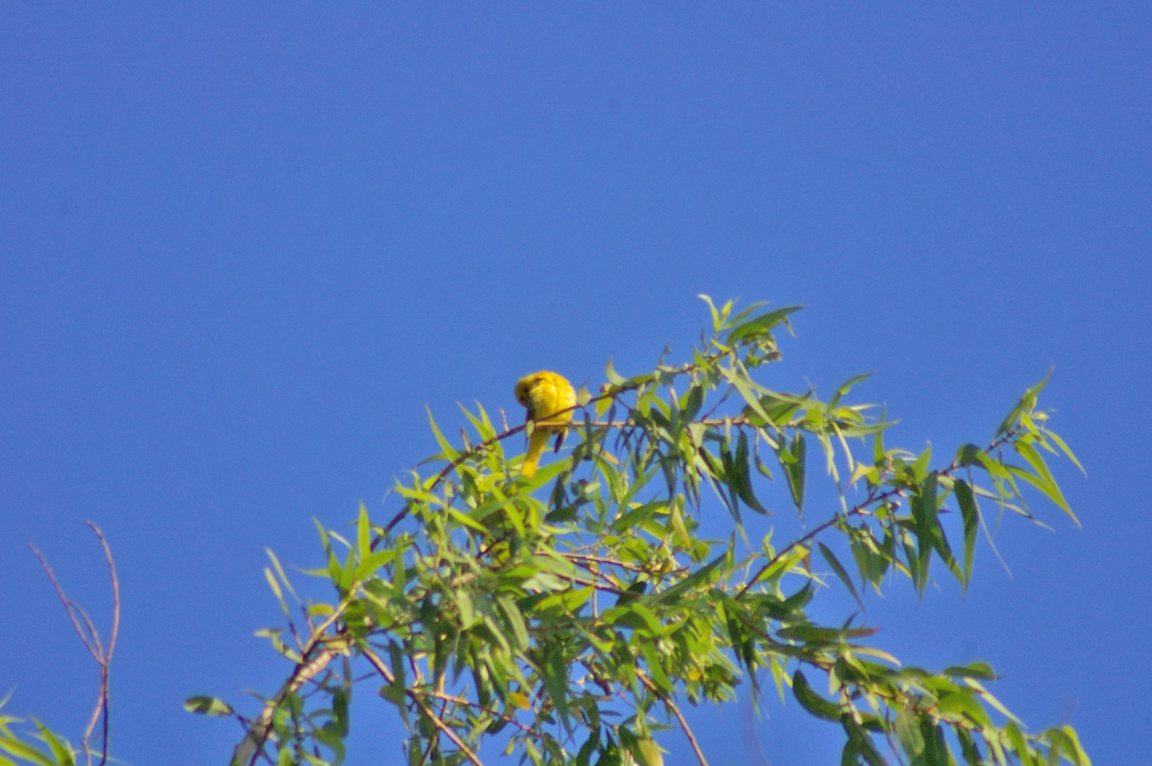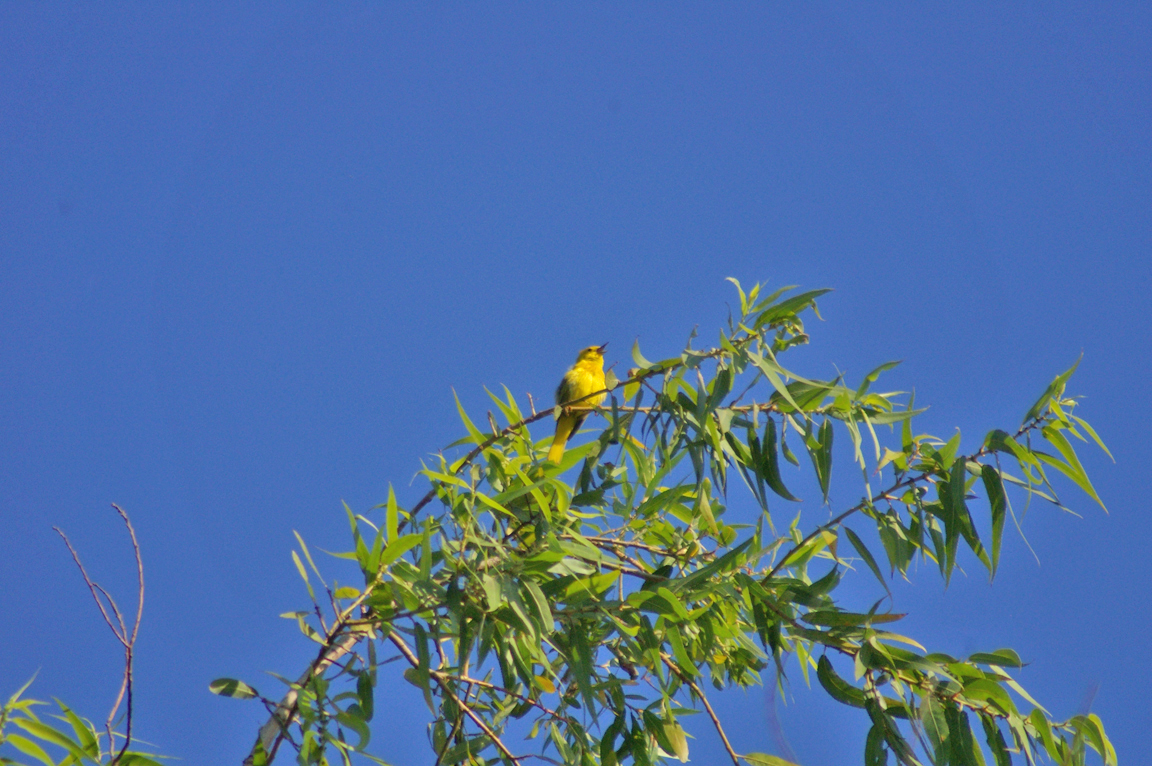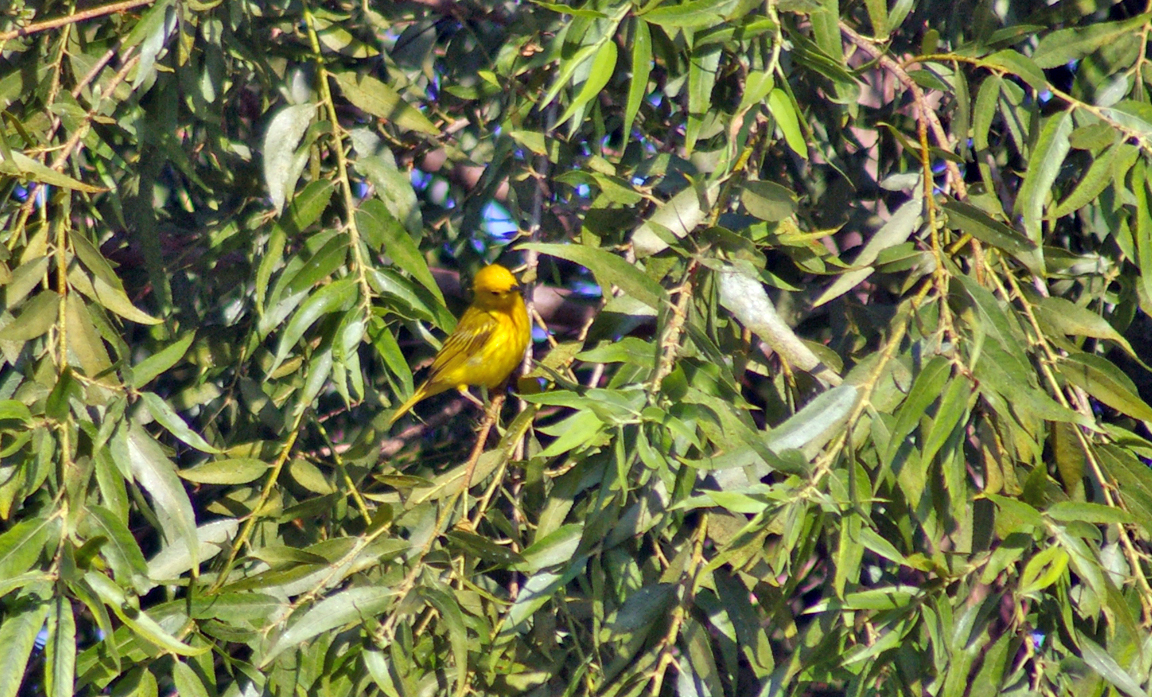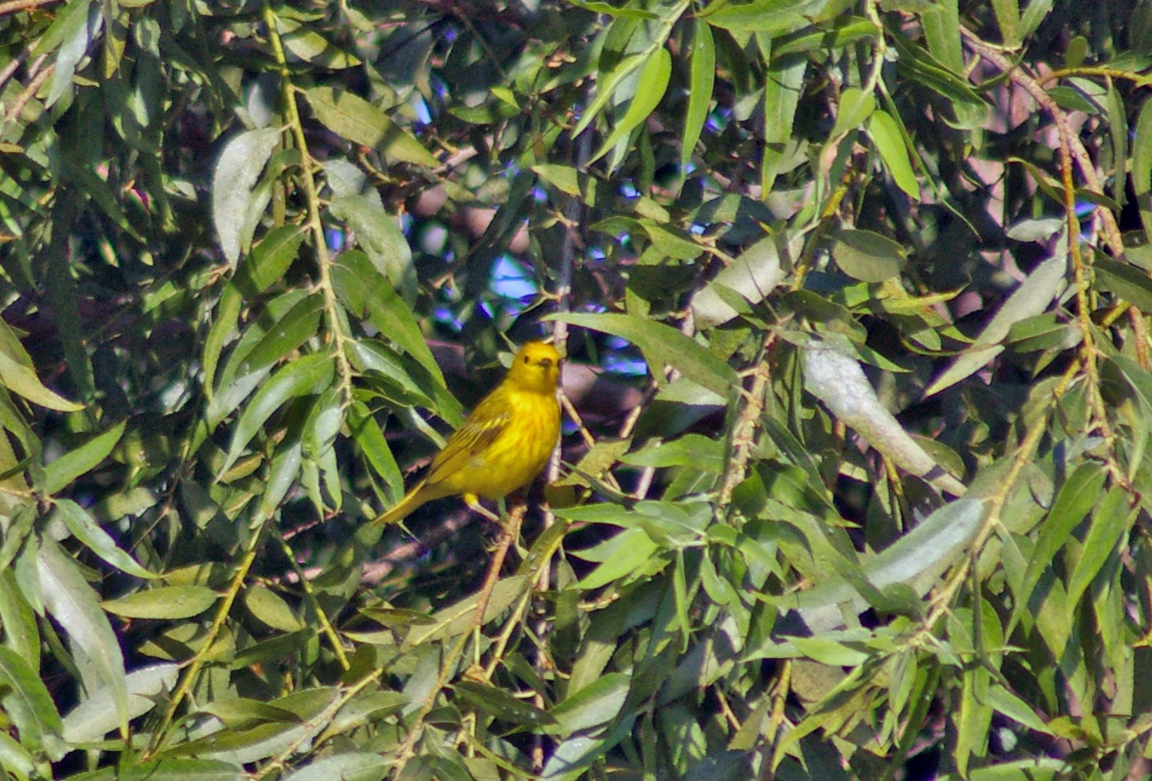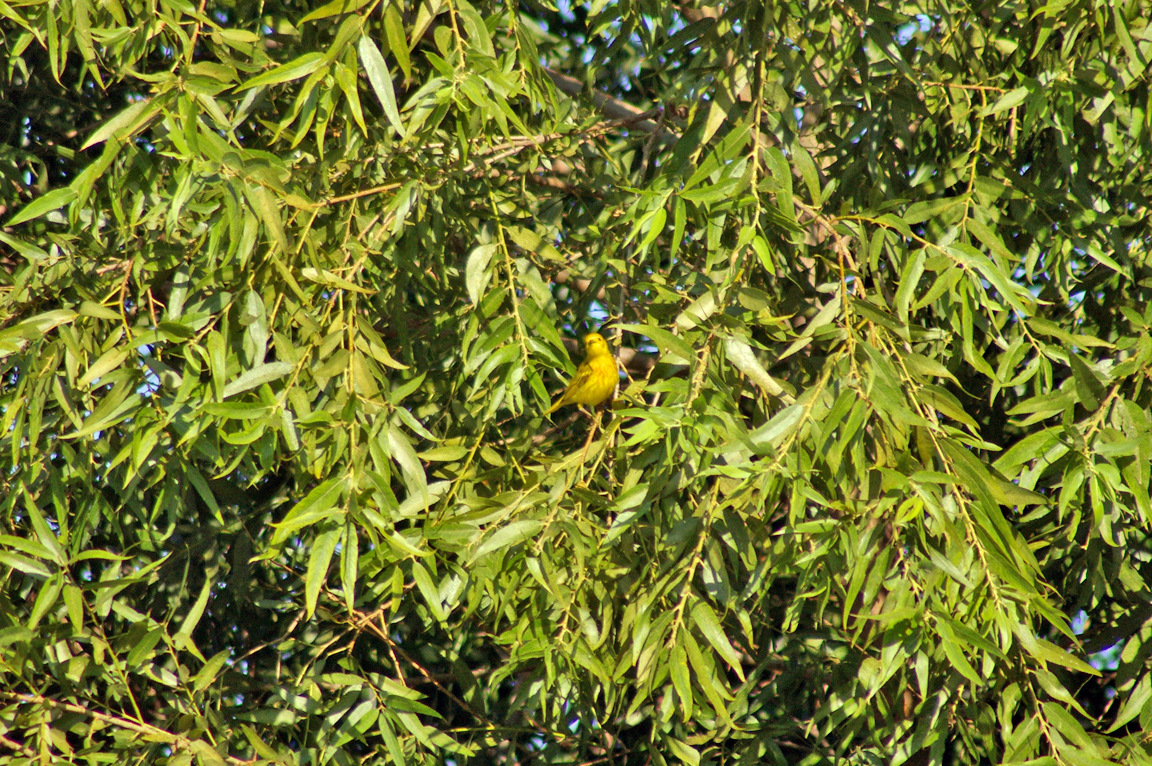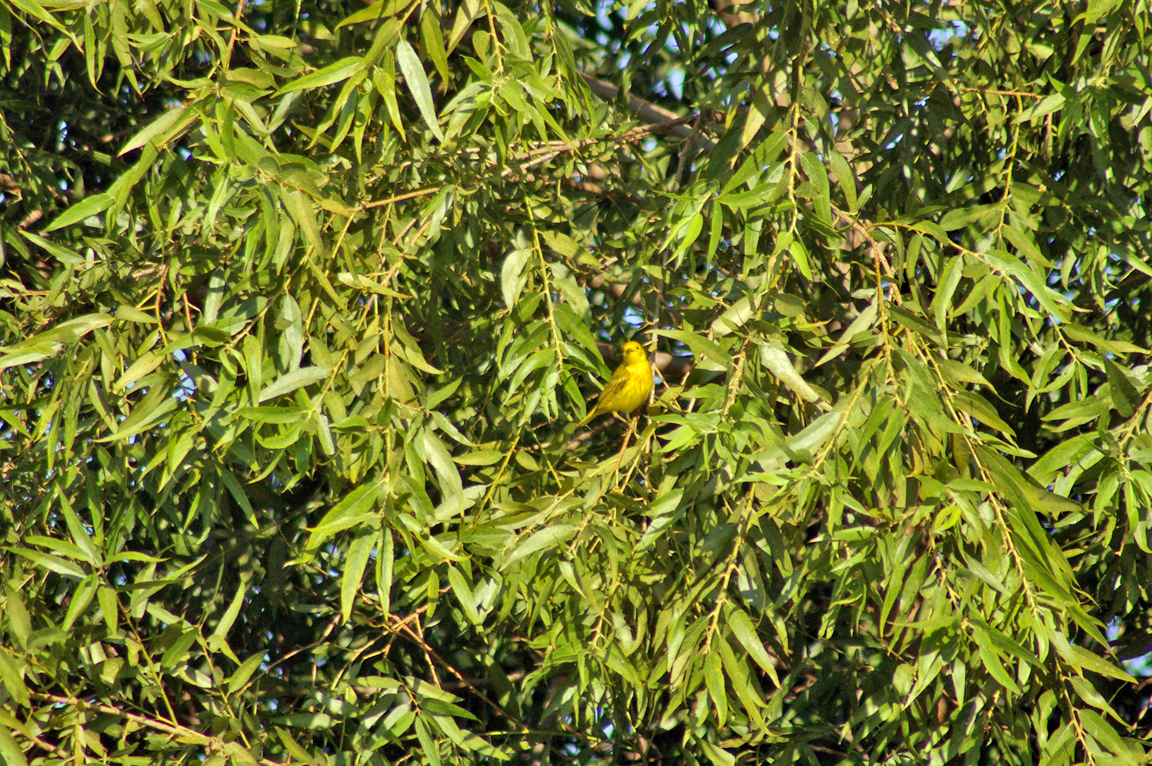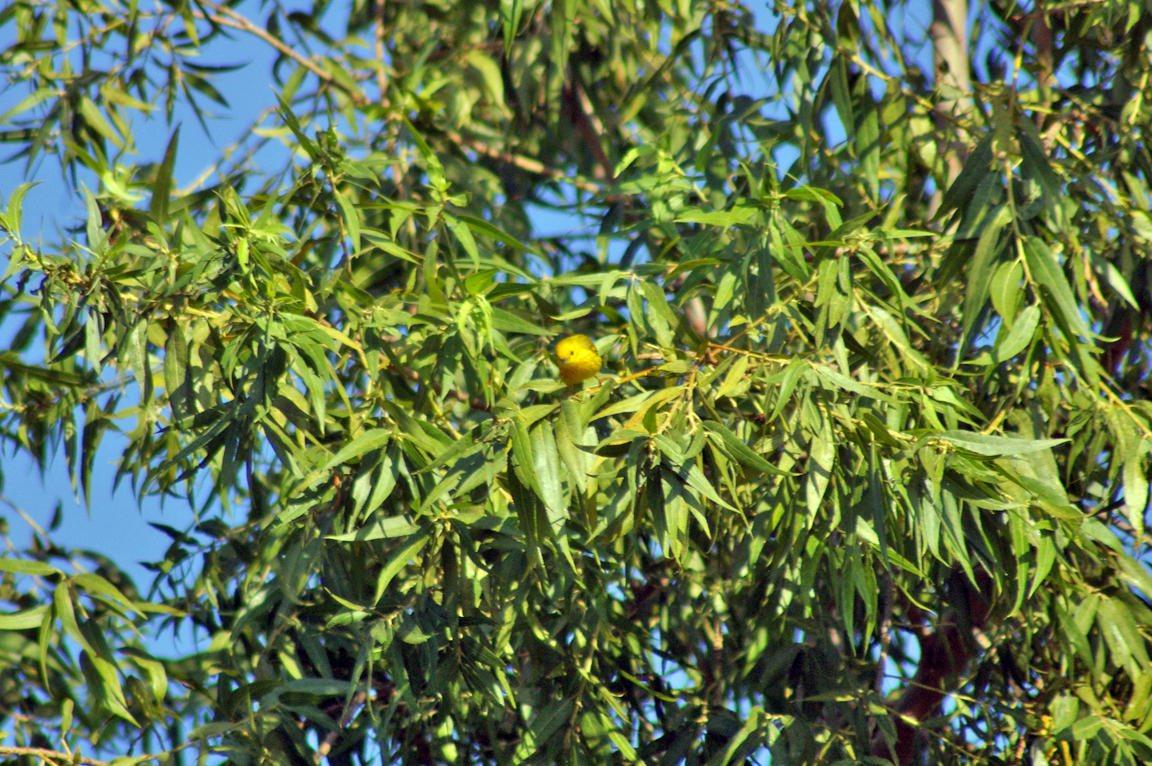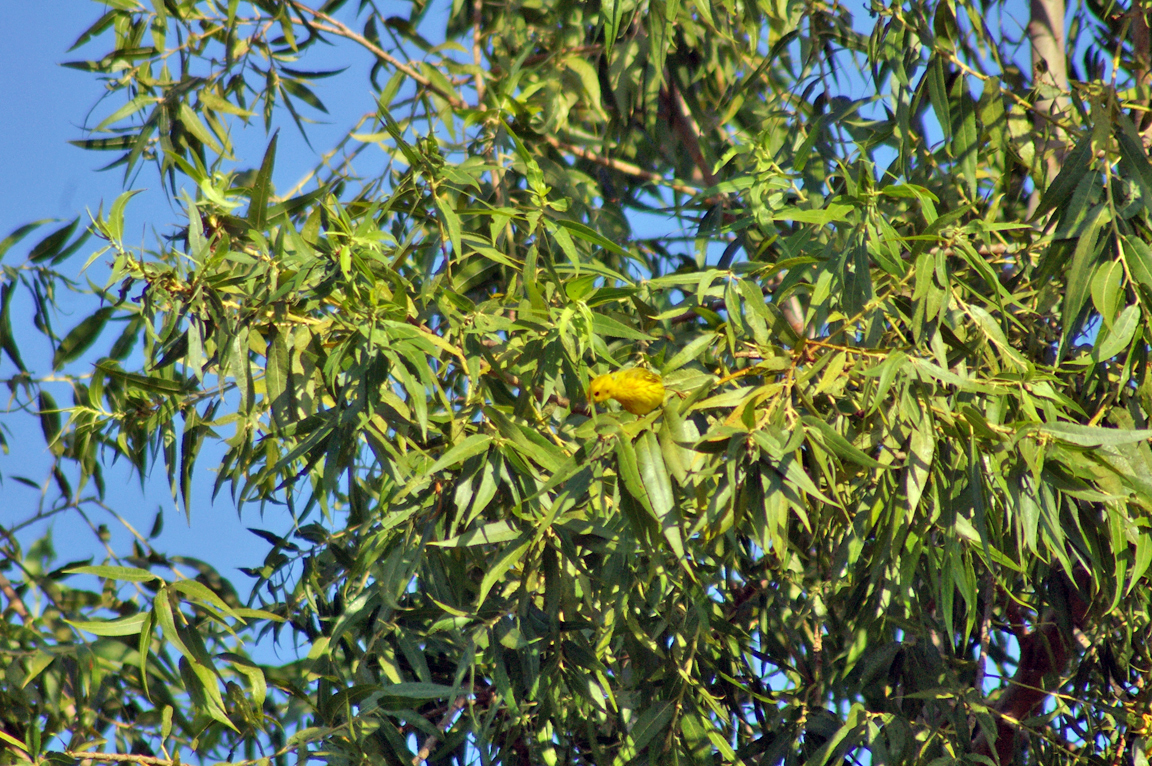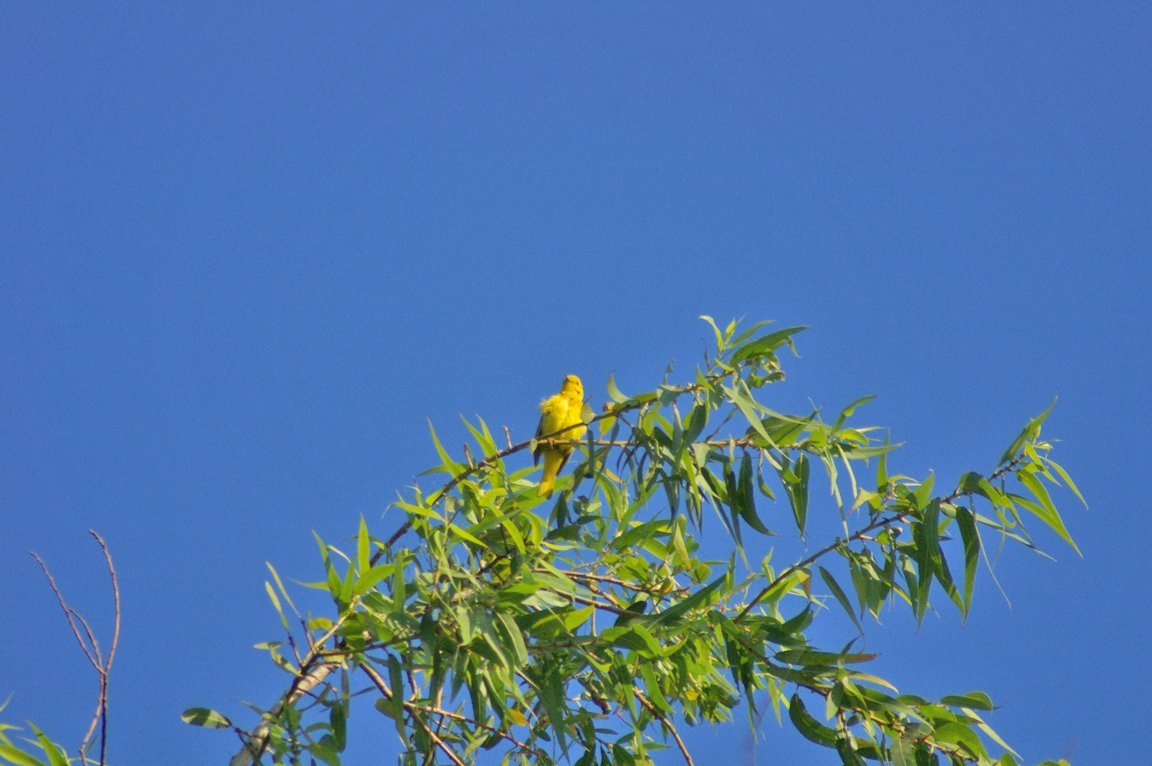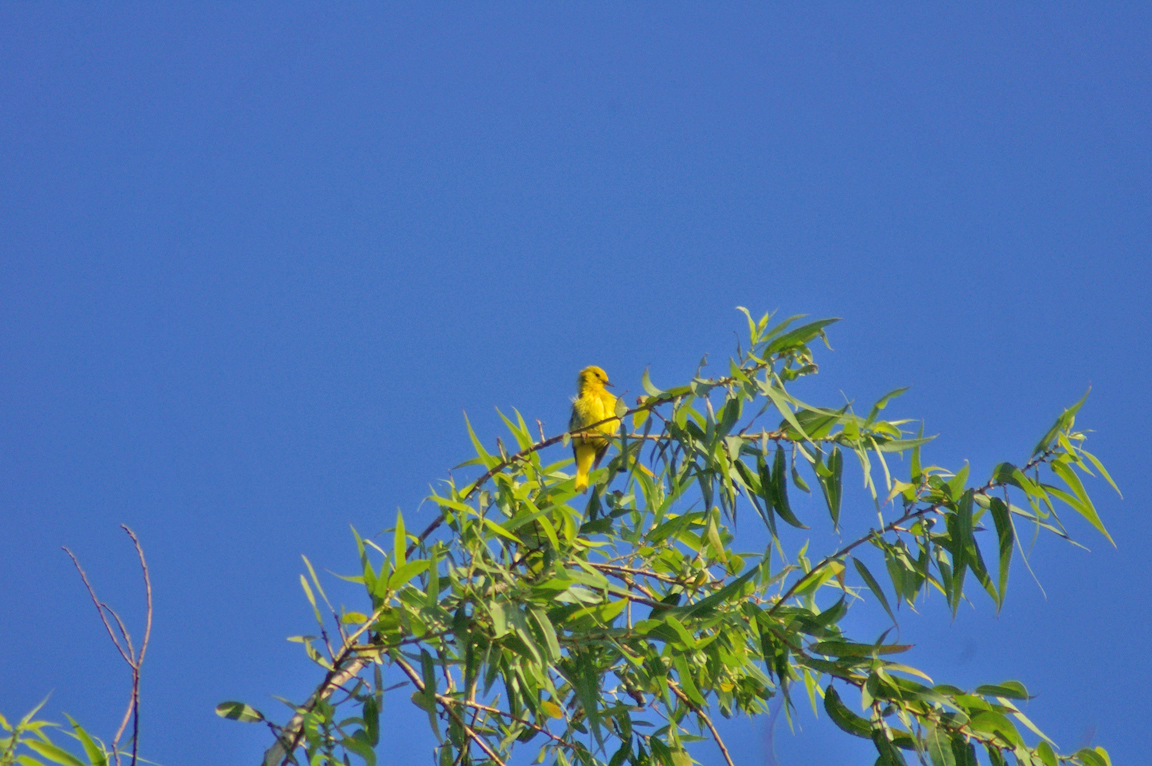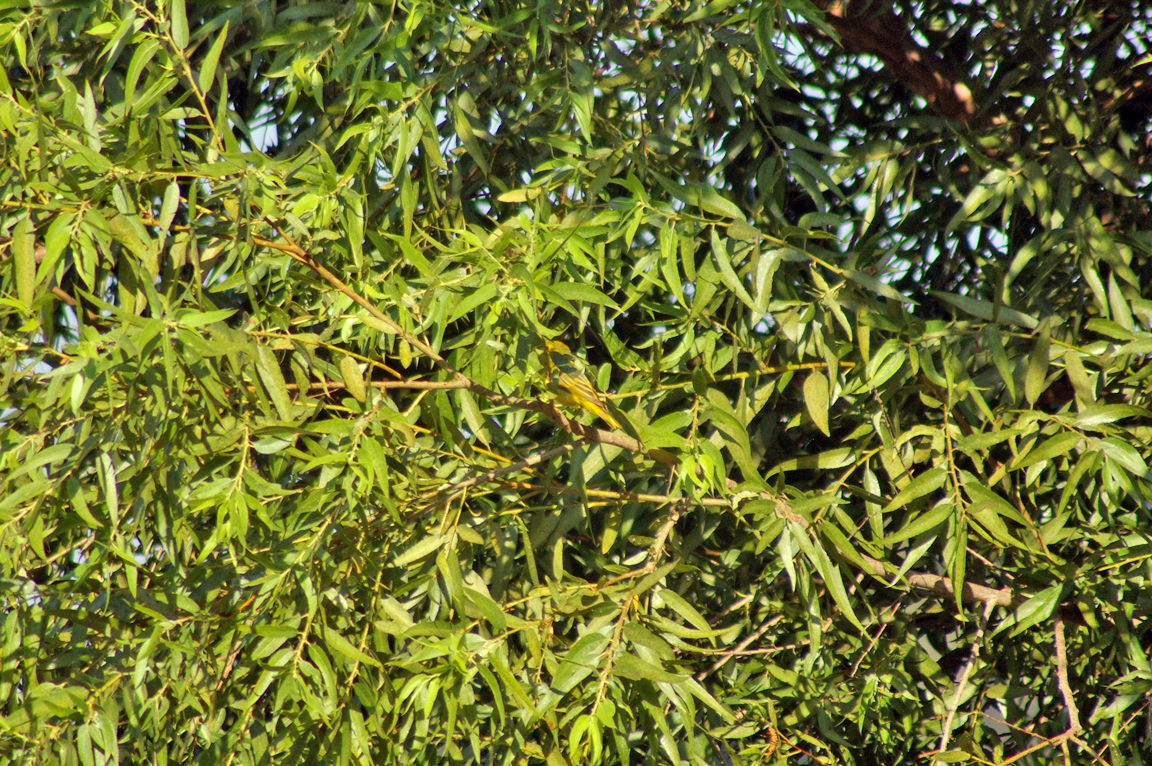|
|
|
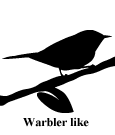 |
Yellow Warbler
|
| Dendroica petechia | |
Although many warblers are yellow, the Yellow Warbler is the most extensively yellow of any species. This widespread species of willows and mangroves is the only warbler with yellow tail spots.
Interesting Information
-
In addition to the migratory form of the Yellow Warbler that breeds in North America, several other resident forms can be found in Mexico, Central America, and the Caribbean. Males in these populations can have chestnut caps or even chestnut covering the entire head.
-
The nests of the Yellow Warbler are frequently parasitized by the Brown-headed Cowbird. The warbler often builds a new nest directly on top of the parasitized one, sometimes resulting in nests with up to six tiers.
-
Recent DNA-based studies indicate that the Chestnut-sided Warbler is the closest relative of the Yellow Warbler. Both sing similarly phrased songs, and Yellow Warblers regularly sing songs nearly identical to those of the Chestnut-sided Warbler.
-
A group of yellow warblers are collectively known as a "stream", "sweetness", and "trepidation" of warblers.
Description
Adult Description
-
Small songbird.
-
Thin pointed bill.
-
Yellow overall.
-
Chestnut streaks on chest of male.Length Range: 13 cm (5 in)
-
Weight: 9 g (0.3 oz)
-
Size: Small (5 - 9 in)
Sex Differences
Male Description
Face, throat, and underparts bright yellow. Streaked with chestnut below throat. Upperparts yellow-green to olive. Wings edged in yellow. Yellow tail spots.
Female Description
Underparts bright yellow. Back and most of face greenish-yellow. Indistinct yellow eyering. Narrow and indistinct chestnut streaks on breast, sides, and flanks. Yellow tail spots.
Immature
Immatures similar to adult female, but paler and duller, usually without chestnut chest streaks. Yellow tail spots reduced.
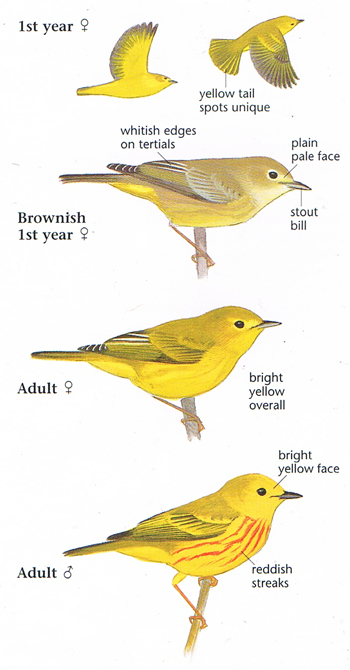
Photo taken from: The Sibley Field Guide by David Allen Sibley
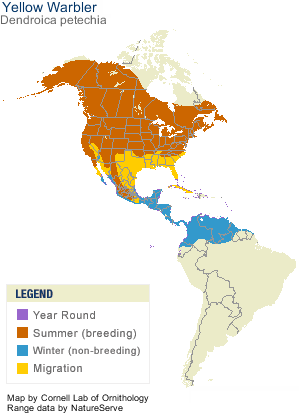
© 2003 Cornell Lab of Ornithology
|
Habitat |
|
|
Behavior |
|
Captures insects by gleaning, flycatching, and hovering. |
|
Food |
|
Insects and other arthropods, occasionally fruit. |
Taxonomy
| Kingdom: | Animalia |
| Phylum: | Chordata |
| Subphylum: | Vertebrata |
| Class: | Aves |
| Order: | Passeriformes |
| Family: | Parulidae |
| Genus: | Dendroica |
| Species: | Dendroica petechia |
| Subspecies: | Dendroica petechia aequatorialis |
| Dendroica petechia aestiva | |
| Dendroica petechia aithocorys | |
| Dendroica petechia albicollis | |
| Dendroica petechia alsiosa | |
| Dendroica petechia amnicola | |
| Dendroica petechia armouri | |
| Dendroica petechia aureola | |
| Dendroica petechia aurifrons | |
| Dendroica petechia babad | |
| Dendroica petechia banksi | |
| Dendroica petechia bartholemica | |
| Dendroica petechia brewsteri | |
| Dendroica petechia bryanti | |
| Dendroica petechia castaneiceps | |
| Dendroica petechia chlora | |
| Dendroica petechia chrysendeta | |
| Dendroica petechia cienagae | |
| Dendroica petechia dugesi | |
| Dendroica petechia eoa | |
| Dendroica petechia erithachorides | |
| Dendroica petechia flaviceps | |
| Dendroica petechia flavida | |
| Dendroica petechia gundlachi |
Similar Species |
|
|
Bird Sound |
|
Variable. Most common song is a rapid musical "sweet-sweet-sweet-I'm-so-sweet." |
|
Eggs look like this |
|
Photo taken from: ARCTOS Collaborative Collection Management Solution |
